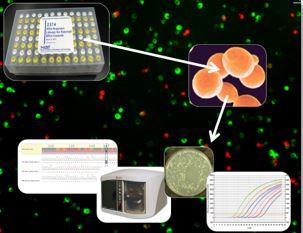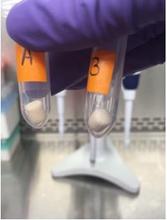Saccharomyces cerevisiae (RM 8230): A NIST Reference Material Supporting Research and Quality Assurance in Multiple Microbial Fields
Summary
Confidence in microbial cell quantification—whether measuring total or viable cells—remains limited, in part due to the lack of well-characterized, broadly applicable reference materials. To address this need, NIST has developed Reference Material (RM) 8230, a living yeast cell reference material characterized for both total cell counts and colony-forming units (CFU).
RM 8230 provides a reliable, standardized input for assessing and comparing microbial cell characterizations such as cell count, viability assessment, and nucleic acid-based detection methods across diverse applications, including microbial genomics, biosurveillance, biotechnology, bioprocessing, sterility testing, food safety, and environmental microbiology. In addition, its biological safety profile makes it suitable for low-risk field training scenarios involving biothreat detection and response.
NIST RM 8230 Saccharomyces cerevisiae NE095 for Cell Counting and DNA-based Detection (freeze-dried) Purchasing information
Description

Quantification of total and viable microbial cells is essential across a wide range of scientific and industrial applications—from evaluating DNA extraction efficiency in support of microbial DNA-based techniques to validating antimicrobial treatments and benchmarking technologies for microbial enumeration and detection.
To meet the growing need for standardized materials in these areas, NIST has developed RM 8230, the first living, whole-cell NIST reference material characterized for total cell count. This material consists of Saccharomyces cerevisiae strain NE095 (baker’s yeast), engineered to contain a stable genomic insertion. The inserted ≈500 bp sequence is derived from the extremophile Methanocaldococcus jannaschii (from NIST SRM 2374) and enables specific detection of the yeast using nucleic acid-based methods such as qPCR, digital PCR, or sequencing.
RM 8230 is supplied in a lyophilized format and has undergone extensive homogeneity and stability testing at NIST. It can be used in powder form, rehydrated into suspension, or applied to surfaces—making it adaptable to a wide variety of workflows and test formats.
Beyond its utility as a safe surrogate for first responder training and biological detection exercises, RM 8230 provides a versatile, well-characterized microbial standard for laboratories in fields such as:
- Food safety and fermentation science
- Biomanufacturing and cell engineering
- Environmental and clinical microbiology
- Metagenomics and microbial ecology
RM 8230 helps ensure consistency, comparability, and confidence in microbial measurements—whether in research, quality assurance, or regulatory testing.

This work was supported by Interagency Agreements between the Department of Homeland Security Science and Technology Directorate (DHS S&T) and NIST.

